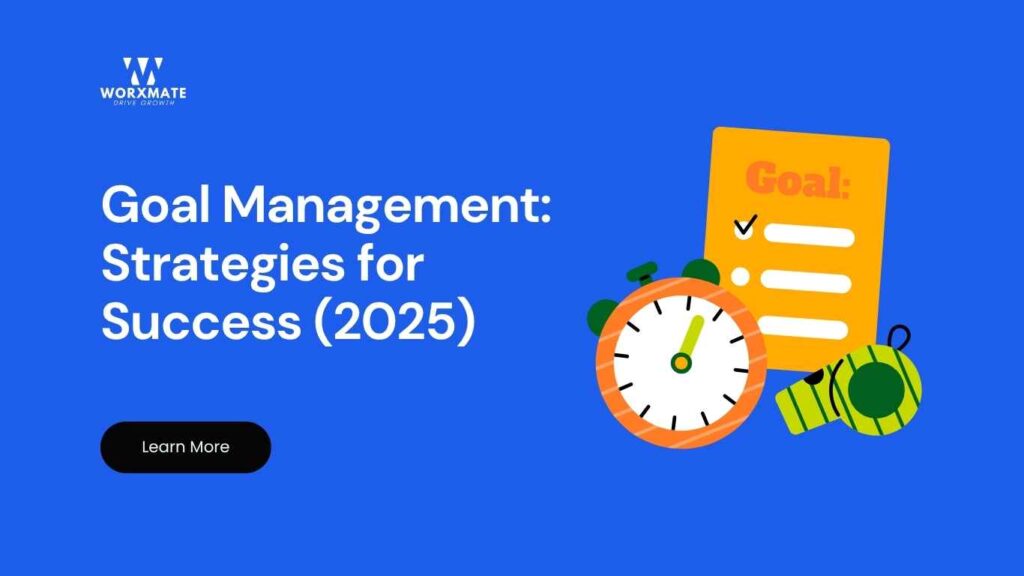Summary:
Goal management is the backbone of organizational success, ensuring that every team member aligns with the broader vision and objectives. This article explores what goal management entails, how to define goals in management, the importance of a robust goal management plan, and real-world case studies that spotlight best practices.
What is Goal Management? (And Why It Matters)
Goal management is more than just setting targets-it’s a comprehensive process that enables organizations to clearly communicate strategies and business objectives at every level.
When done right, goal management connects the dots between high-level strategy and day-to-day operations, ensuring that every manager, department, and individual understands their role in driving the company forward.
This alignment not only boosts efficiency but also empowers employees, giving them clarity on how their efforts contribute to the organization’s success.
In the dynamic world of modern business, managing goals effectively has become more crucial than ever. Without a clear system, organizations risk miscommunication, wasted resources, and disengaged employees.
A robust goal management plan ensures that strategic plans are translated into operational actions, creating a unified direction and measurable results.
Whether you’re leading a startup or managing a global enterprise, mastering goal management is key to staying competitive and achieving sustainable growth.
How Do You Define Goal in Management?
To define a goal in management, you must articulate a specific outcome that an organization, team, or individual aims to achieve within a set timeframe.
This process involves more than stating a wish-it requires clarity, measurability, and relevance. In management, goals serve as guiding stars, shaping decisions, resource allocation, and performance evaluation.
A well-defined management goal answers the questions: What do we want to achieve? Why does it matter? How will we measure success?
For example, a management goal might be to “increase customer retention by 15% within the next year by launching a loyalty program.” This goal is specific, measurable, and time-bound, providing a clear target for the team.
The Role of Management Goals
Management goals are the foundation upon which strategies are built. They provide direction, foster accountability, and enable organizations to track progress.
Effective management goals cascade from the top down, aligning individual and departmental objectives with the company’s overarching mission.
This cascading effect ensures that every action taken at the ground level supports the broader vision.
Additionally, setting clear management goals enables organizations to focus on the most important initiatives, use resources wisely, and inspire teams to perform at their best.
When employees see how their work ties into larger objectives, they are more likely to be engaged and productive. In conclusion, establishing well-defined goals in management is crucial for enhancing organizational effectiveness and success.
What is a Goal Management Plan?
A goal management plan is a structured approach that guides individuals or organizations in setting, pursuing, and achieving objectives efficiently.
It’s more than a checklist-it’s a dynamic framework that adapts to changing circumstances, ensuring continuous alignment with evolving priorities.
A comprehensive goal management plan typically includes:
- Identification of SMART goals (Specific, Measurable, Achievable, Relevant, Time-bound)
- Assessment of the current state and resource availability
- Development of actionable strategies and milestones
- Regular monitoring, feedback, and adjustment mechanisms
By following a goal management plan, organizations can synchronize teams, optimize resources, and navigate challenges with agility. This proactive approach not only boosts the likelihood of success but also fosters a culture of continuous improvement.
Steps to Create an Effective Goal Management Plan
- Define Clear Goals: Start by articulating what you want to achieve, using the SMART framework for precision.
- Assess Current State: Understand your starting point, identify gaps, and evaluate available resources.
- Develop Strategies: Outline the steps, assign responsibilities, and set timelines for each milestone.
- Track Progress: Set clear key performance indicators (KPIs) and consistently assess your advancement toward each goal.
- Adjust as Needed: Be flexible-adapt your plan based on feedback and changing circumstances.
A well-crafted goal management plan transforms aspirations into actionable roadmaps, paving the way for sustained organizational success.
Real-World Case Study: Goal Management in Action
Case Study: Seagate’s Goal Alignment Workshops (Gartner)
One of the most compelling examples of effective goal management comes from Seagate, a global leader in data storage solutions.
According to Gartner, Seagate implemented a series of goal alignment workshops designed to synchronize executive goals with the company’s overarching corporate strategy.
These workshops brought together leaders from various departments, fostering open dialogue and collaboration.
The result? Greater alignment, improved communication, and a clear understanding of how individual and team objectives contributed to Seagate’s strategic vision.
This approach not only enhanced accountability but also empowered employees to take ownership of their goals, driving higher engagement and performance.
Key Takeaways:
- Alignment: Regular workshops ensured that every leader understood and supported the company’s strategic direction.
- Communication: Open discussions broke down silos, enabling cross-functional collaboration.
- Accountability: Clear goal-setting and tracking mechanisms fostered a culture of ownership and continuous improvement.
Seagate’s experience underscores the importance of structured goal management processes in achieving organizational success.
Supporting Data: The Role of CMOs in Goal Setting (Statista)
A 2025 Statista report found that 79% of U.S. CEOs now include Chief Marketing Officers (CMOs) in financial goal setting. This trend highlights the growing recognition of cross-functional collaboration in goal management. By involving key stakeholders from various departments, organizations can ensure that goals are not only ambitious but also realistic and aligned with business priorities.
Examples of Goal Management
Examples of effective goal management can be found across various industries, demonstrating how aligning individual and organizational objectives drives success.
For instance, Fossil Group transitioned from a paper-based performance review system to a digital strategy, resulting in 92% employee participation in goal-setting reviews.
However, they identified that 35% of goals were misaligned, prompting them to implement continuous feedback and dedicated “Performance Days” to enhance alignment and focus.
In the tech sector, a company facing 70% employee disengagement improved engagement by 30% and productivity by 20% through transparent communication and quarterly goal-setting sessions that aligned personal and company goals.
Microsoft’s adoption of the OKR (Objectives and Key Results) framework under CEO Satya Nadella led to a 17% revenue increase by fostering a goal-oriented culture emphasizing collaboration and innovation.
Similarly, LinkedIn’s use of OKRs helped the company scale to a $20 billion valuation by setting ambitious, aligned quarterly objectives across teams.
These examples highlight the power of clear, measurable goals combined with regular check-ins and alignment to drive organizational performance.
Best Practices: Making Goal Management Work for You
Use SMART or OKR Frameworks
The SMART framework (Specific, Measurable, Achievable, Relevant, Time-bound) remains the gold standard for setting effective goals. Similarly, the OKR (Objectives and Key Results) methodology helps organizations focus on outcomes rather than just tasks. Both frameworks encourage clarity, focus, and accountability.
Involve Employees in the Process
Research by McKinsey reveals that employees are more motivated and productive when they understand how their work connects to the organization’s purpose.
Involving team members in goal-setting discussions fosters engagement and ensures that goals are both meaningful and attainable.
Monitor and Adjust Regularly
Goal management is not a “set it and forget it” exercise. Regular reviews, feedback sessions, and data-driven adjustments are essential for staying on track.
Modern goal management tools, such as Worxmate’s OKR software, make it easy to track progress and pivot when necessary.
Conclusion:
Goal management is the cornerstone of organizational excellence. By defining clear management goals, implementing a robust goal management plan, and leveraging best practices, you can drive alignment, accountability, and sustained success.
As demonstrated by real-world case studies, structured goal management processes empower teams, foster collaboration, and deliver measurable results.
Worxmate’s OKR software is your partner in this journey, offering powerful tools to simplify and supercharge your goal management efforts. Don’t leave your success to chance-embrace a smarter way to set, track, and achieve your goals.
Ready to transform your organization’s performance? Sign up for Worxmate’s OKR Tracking Software today and unlock your team’s full potential!



